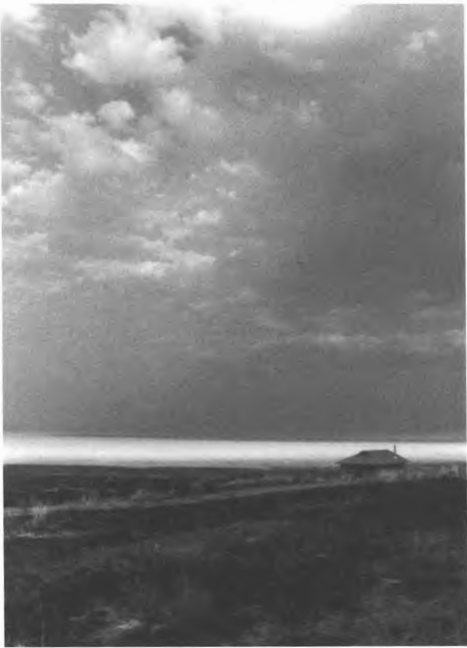A Letter from the Editor
HDJ Issue No. 1, Spring 2005
Several years ago after reading Terry Tempest Williams' An Unspoken Hunger, I decided she was right, "someone must chart the changes." As a young girl growing up in central Oregon, I would look east with my schoolbook definition of deserts and wonder to myself, "what's out there?" As an adult, I have found my way into that wondering. It has taken me to the top of Wheeler Peak, into the canyons of the Steens, onto the Black Rock Desert, down into Death Valley and into ownership of a cabin in eastern Oregon.
Photo by Debra Hollern, 2005
At the cabin, I began to chart the changes. Temperature. Time of sunrise. Wildlife seen. Important work, I believe. But as C.E.S. Wood has written about himself, "I have a relentless creative urge," and so note taking has been accompanied by poetry and painting, sculpture and essays. From this work I have looked up and around into the landscape east of the Cascades and found many others like me—all of us charting the changes, answering the question, "what's out there?" High Desert Journal's goal is to examine the layers of place through story, poetry, people and art. High Desert Journal strives for this by encouraging writers and artists of the Great Basin to submit work on any theme and for those residing outside of the region to submit on a subject or element of the high desert.
Be assured if you bring together a geologist, botanist and archaeologist and ask each to define the Great Basin, a lively conversation will ensue. Hard and fast boundaries of the Great Basin are elusive. In the spirit of creativity, High Desert Journal will only add to the liquidity of any definition. We hope to contribute to a sense of and connection to a place that is as mysterious and unique as it is vast.
In this inaugural issue, elements, stories and people of the high desert are illuminated by both established and emerging voices. Gary Snyder gives us brushpiles and lava soil, Ursula K. Le Guin offers owls and bonedry wind and David James Duncan lends hawks, the Steens and an old Renault east of Christmas Valley. In an interview by Ellen Santasiero, we meet Jarold Ramsey, poet, historian and essayist, who has focused much of his life on the native people of eastern Oregon. We read Oregonian Henry Sayre's depiction of impressionist painter Childe Hassam's time in Harney County in the early nineteen hundreds. We experience deep connection to place in the face of life changes in an essay by Idaho author Kim Barnes. We visit present day land use through Nevada photographer Peter Goin's work, which he describes as being about "living a life of creative and dedicated citizenship, of bearing witness and of providing visual evidence .... " In this first issue we begin to measure the layers, chart the changes and together map, as Jarold Ramsey has described, "an ecology of memory, imagination and story."
The tremendous support and enthusiasm that has gathered to produce High Desert Journal is a testament to the landscape of the Great Basin. My deepest appreciation and regards is extended to artists, writers, donors, subscribers and volunteers who have helped High Desert Journal fly. I look forward to sharing the explorations!
—Elizabeth Quinn, Spring 2005


